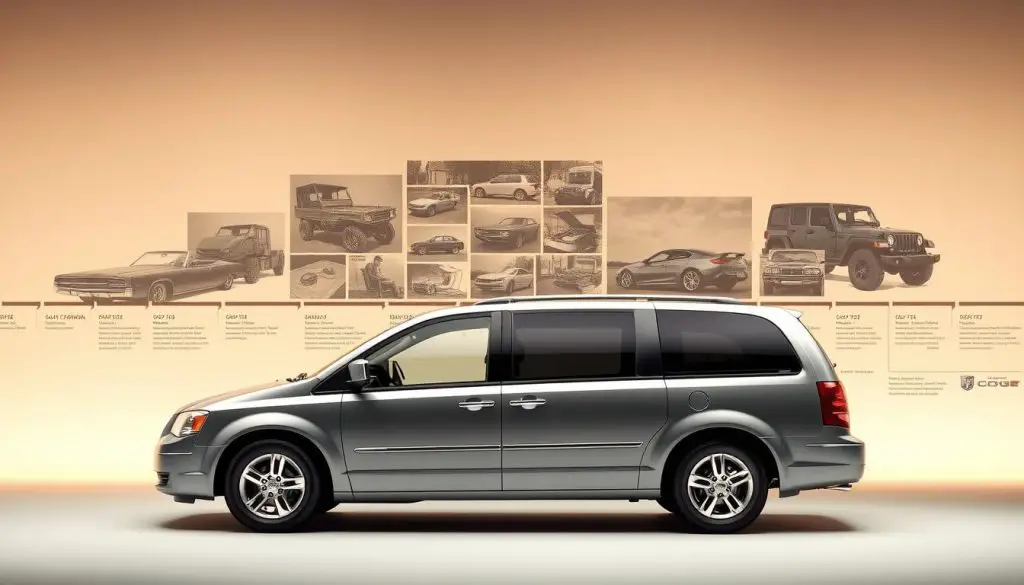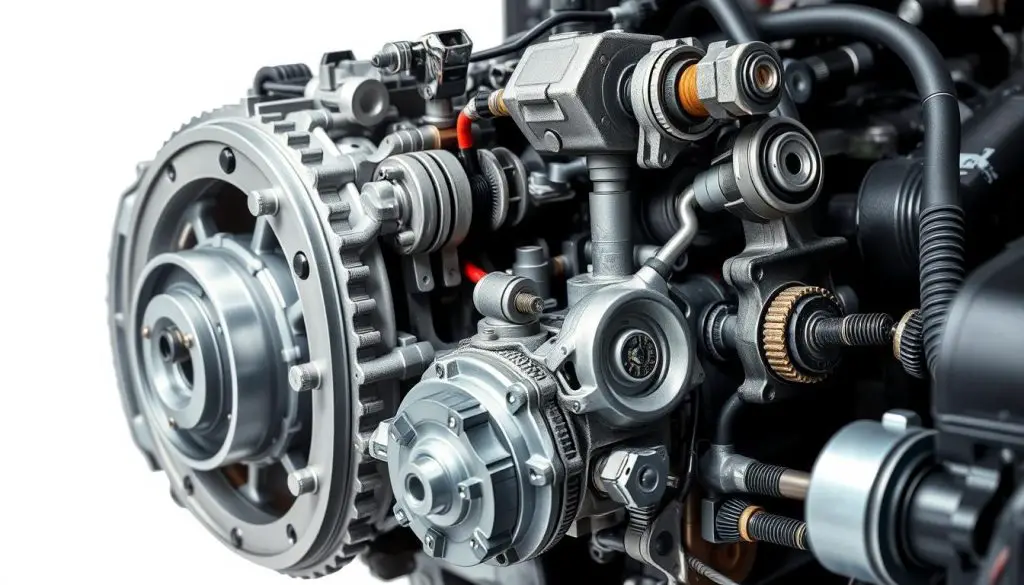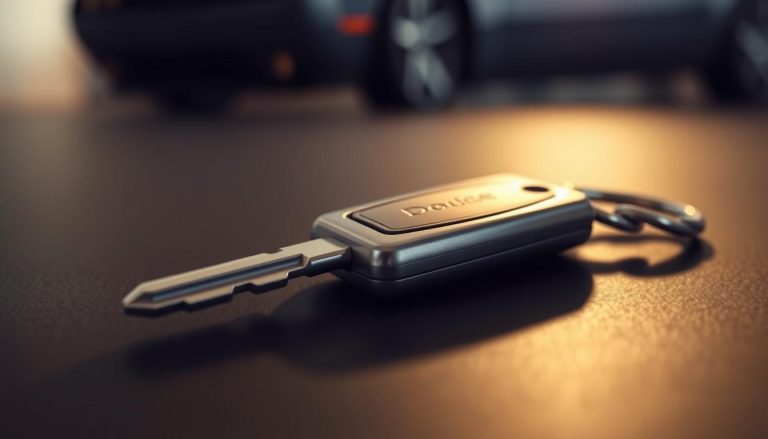The Dodge Caravan, a cornerstone in the minivan sector for decades, has consistently provided families with a dependable and expansive vehicle. Notwithstanding, specific model years have been marred by reliability issues and mechanical malfunctions.
Several model years have encountered substantial problems, including transmission malfunctions and other mechanical failures, rendering them less appealing to prospective buyers. Grasping these issues is imperative for making an informed acquisition decision.
By delving into the Dodge Caravan years to avoid, buyers can circumvent models with a track record of problems, opting instead for more dependable models.
Key Takeaways
- Certain Dodge Caravan models are prone to reliability issues.
- Transmission problems are common in some model years.
- Researching the model year is crucial for avoiding problematic vehicles.
- Understanding minivan issues can lead to a more informed purchase.
- Reliability varies significantly across different model years.
The Legacy of the Dodge Caravan
The Dodge Caravan, a trailblazer in the minivan segment, has left an indelible mark on American roads. Its introduction in the 1980s transformed the automotive landscape, offering families a practical and spacious alternative to traditional vans and station wagons.

A Brief History of America’s Popular Minivan
The Dodge Caravan’s narrative is one of continuous innovation and adaptation to consumer demands. Launched as a 1984 model, it swiftly gained traction for its versatility and affordability. Through the years, it has seen numerous updates, integrating technological, safety, and comfort advancements. Automotive experts attribute its success to its ability to evolve with the evolving needs of American families.
Production Timeline and Generations
The Dodge Caravan has traversed several generations, each epoch marking notable improvements and shifts. The production timeline can be delineated into distinct eras:
- First Generation (1984-1990)
- Second Generation (1991-1995)
- Third Generation (1996-2000)
- Fourth Generation (2001-2007)
- Fifth Generation (2008-2020)
Grasping these generations is essential for discerning the merits and demerits of various model years.
“The Caravan’s enduring presence is a testament to its impact on the automotive landscape.” As we dissect the different eras, it emerges that while some years are celebrated for their reliability and features, others are best circumvented due to recurring issues.
Understanding Common Issues in Dodge Caravans
The Dodge Caravan, despite its widespread acclaim, has encountered a multitude of problems that prospective buyers must acknowledge. Grasping these issues is essential for making a well-informed choice when considering a used model.
Transmission Problems Across Generations
Transmission malfunctions have been a persistent issue across Dodge Caravan generations. Symptoms often include slipping, hesitation, or failure to engage gears correctly. Regular transmission maintenance is imperative to mitigate these problems.
Electrical System Failures and Their Symptoms
Electrical system failures can manifest in various ways, including faulty lighting, malfunctioning infotainment systems, and erratic dashboard warnings. Identifying these symptoms early can prevent more significant problems. “A stitch in time saves nine,” as regular checks can help avoid costly repairs.

Engine Complications and Reliability Concerns
Engine reliability concerns have been a significant issue for some Dodge Caravan models. Problems such as oil leaks, overheating, and engine stalling have been reported. Regular oil changes and monitoring engine performance are vital to extending the engine’s lifespan.
By being aware of these common issues, Dodge Caravan owners and potential buyers can take proactive steps to maintain their vehicle’s health and avoid costly repairs down the line.
First Generation Issues (1984-1990)
The inaugural Dodge Caravan, spanning from 1984 to 1990, marked a significant milestone in the minivan segment. It, unfortunately, encountered a plethora of challenges. This knowledge is imperative for both prospective and current owners.
Notable Problems and Mechanical Weaknesses
The early Dodge Caravans were marred by several mechanical maladies, including transmission and engine-related issues. Transmission problems, such as slipping and hesitation, were frequently linked to faulty solenoids or insufficient transmission fluid levels.
- Transmission slipping or hesitation
- Engine oil leaks
- Electrical system failures
These mechanical shortcomings posed substantial concerns for owners, often necessitating expensive repairs. For example, the cost of replacing a faulty transmission could exceed $1,000, contingent upon the severity of the damage.
Consumer Experiences and Long-Term Durability
Despite the mechanical hurdles, many owners expressed satisfaction with their first-generation Dodge Caravans. They commended the spacious interiors and versatility. Notwithstanding, concerns regarding long-term durability persisted, with some owners encountering recurrent transmission and engine problems.
To enhance longevity, owners were counseled to adhere to a consistent maintenance regimen. This included regular inspections of the transmission and engine. Such proactive measures allowed many to extend their vehicle’s lifespan.
Second and Third Generation Concerns (1991-2000)
The Dodge Caravan’s second and third generations, spanning from 1991 to 2000, were marred by various problems, notably in specific model years. This era witnessed considerable advancements in design and technology, yet these innovations sometimes precipitated reliability challenges.
The introduction of the second generation in 1991 heralded several enhancements over its predecessor, including a more aerodynamic silhouette and upgraded engine capabilities. Despite these advancements, the model was not without its shortcomings.
The Problematic 1996-1999 Models to Avoid
The 1996-1999 Dodge Caravan models are emblematic of the era’s mechanical maladies, notably transmission and other mechanical failures. These issues frequently necessitated costly repairs for the vehicle’s owners.
Common afflictions during this time frame included transmission failures, which were not only inconvenient but also economically burdensome. Owners frequently reported slipping transmissions, erratic gear shifts, and, in extreme cases, complete transmission collapse.
Transmission Failures and Repair Costs in Late 90s Models
Transmission malfunctions were a pervasive concern for the Dodge Caravan, predominantly in the late 1990s models. The expense of rectifying or replacing these transmissions was considerable, often exceeding several thousand dollars.
Consequently, some owners resorted to third-party transmission rebuilds or replacements, which were occasionally more economical than dealership services.
Understanding these potential issues is crucial for prospective buyers when considering a used Dodge Caravan from these generations.
Dodge Caravan Years to Avoid: Fourth Generation (2001-2007)
When contemplating the acquisition of a used Dodge Caravan, it is imperative to grasp the complexities of the fourth generation models, spanning from 2001 to 2007. This era was marred by reliability and performance challenges, exacerbated by specific model year maladies.
The Notorious 2005 Model Year Problems
The 2005 model year stands out as a nadir, plagued by a spectrum of issues from transmission malfunctions to engine-related complications. Transmission problems were a prevalent grievance, often necessitating expensive repairs. Concurrently, engine issues, such as overheating and oil leaks, posed a threat to engine integrity, underscoring the need for immediate attention.
2002-2004 Reliability Issues and Common Failures
The period from 2002 to 2004 was also beset by reliability concerns. Electrical system malfunctions were a common occurrence, manifesting in a variety of issues from minor inconveniences to critical safety risks. Notably, certain models were afflicted with braking system problems, a critical safety issue.
Recall Information and Safety Concerns
It is equally crucial to remain informed about any recalls affecting the fourth generation Dodge Caravan. This era saw several recalls, including those addressing faulty airbags and fuel system leaks. A thorough examination of a vehicle’s recall history can offer insights into potential safety risks and required repairs.
By comprehending these issues and staying abreast of recall information, prospective buyers can make a more informed decision when selecting a used Dodge Caravan from the fourth generation.
Fifth Generation Problem Years (2008-2020)
The fifth generation Dodge Caravan, spanning from 2008 to 2020, encountered a myriad of issues that necessitate attention from prospective buyers. Despite its popularity for its array of features and capabilities, this generation was marred by reliability and performance concerns.
The Troublesome 2008-2010 Models and Their Defects
The initial models, from 2008 to 2010, were plagued by transmission defects. Transmission problems were prevalent, manifesting as slipping, hesitation, and failure to engage gears correctly. These maladies often necessitated expensive repairs.
Electrical system issues, including faulty wiring and malfunctioning accessories, were also reported. These defects not only caused inconvenience but also posed significant safety risks.
2013-2015 Reliability Concerns and Owner Reports
Between 2013 and 2015, Dodge Caravan owners continued to voice reliability concerns. Issues during this period included engine complications and problems with the vehicle’s infotainment system. Engine problems ranged from excessive oil consumption to faulty sensors, impacting performance and increasing maintenance costs.
Owner reports during this period underscored the necessity for regular maintenance to mitigate some of these issues. The persistence of these problems highlights the criticality of comprehensive research before acquiring a used model from these years.
Final Production Years Assessment
In the final years of production (2016-2020), the Dodge Caravan experienced some reliability enhancements. Yet, certain issues persisted, and potential buyers must remain vigilant. A thorough review of the vehicle’s history and a meticulous inspection are imperative before purchase.
While the fifth generation Dodge Caravan boasted several strengths, the model year-specific issues cannot be disregarded. Awareness of these problems is crucial for buyers to make well-informed decisions.
Most Reliable Dodge Caravan Years Worth Considering
Identifying the most reliable Dodge Caravan years is paramount for those in the market for used vehicles. Certain model years are marred by issues, while others are distinguished by their longevity and performance. Grasping these distinctions is essential for making a well-informed decision.
Top-Rated Model Years with Fewer Problems
The 1994 and 1995 Dodge Caravan models are frequently noted for their reliability, attributed to their robust engineering and fewer reported problems. These models benefited from the manufacturer’s improvements in response to earlier model year issues, positioning them as a reliable option for those seeking dependable transportation.
The 2012 Dodge Caravan also merits consideration, having undergone significant updates, including enhancements to the transmission and electrical systems. Owners and reliability surveys have commended this model year for its superior performance and fewer mechanical issues.
Value Propositions in the Used Market
In the realm of used Dodge Caravans, the top-rated model years present a compelling value proposition. For example, the 1994 and 1995 models, despite their age, can still offer reliable service with adequate maintenance, often at a substantially lower purchase price.
| Model Year | Reliability Rating | Average Price (USD) |
|---|---|---|
| 1994 | 8/10 | 1,500 |
| 1995 | 8.5/10 | 1,800 |
| 2012 | 9/10 | 10,000 |
The 2012 model, with its contemporary amenities and enhanced reliability, strikes a balance between age and technological advancements, rendering it a valuable choice in the used market.
Maintenance Tips to Extend Your Caravan’s Lifespan
To prolong the life of your Dodge Caravan, a proactive maintenance strategy is imperative. Emphasizing preventative actions and economical repairs ensures your vehicle’s longevity. This approach guarantees its continued functionality and comfort for extended periods.
Preventative Maintenance for Common Problem Areas
Preventive maintenance is essential to circumvent frequent issues that escalate into expensive repairs. The Dodge Caravan’s transmission, electrical system, and engine are critical areas to monitor. Regular transmission fluid checks, for example, can avert transmission failures, a prevalent concern in certain model years.
Electrical system integrity is also paramount, with regular inspections of wiring and connections crucial. Engine upkeep, such as timely oil changes and filter replacements, is indispensable for your Dodge Caravan’s longevity.
Cost-Effective Repairs and Modifications
Choosing economical repair options can extend your Dodge Caravan’s life without financial strain. This includes sourcing parts from trusted aftermarket suppliers or implementing modifications that enhance reliability.
Upgrading to a high-performance radiator or installing a supplementary transmission cooler can address common engine and transmission issues. Promptly addressing recall notices also prevents more severe problems from arising.
By integrating preventive maintenance with cost-effective repairs and modifications, you can substantially extend your Dodge Caravan’s lifespan. This ensures it remains a dependable and comfortable vehicle for years to come.
Comprehensive Buying Guide for Used Dodge Caravans
The acquisition of a used Dodge Caravan necessitates a profound understanding of the myriad factors influencing the decision-making process. The diversity in model years and generations presents a spectrum of potential issues and advantages, each capable of significantly shaping the outcome of your purchase.
Pre-Purchase Inspection Checklist
Essential to the process of acquiring a used Dodge Caravan is the execution of a comprehensive pre-purchase inspection. This entails a meticulous examination for signs of wear and tear, a review of maintenance records, and an assessment of critical components such as the engine, transmission, and electrical systems.
- Review maintenance and repair history
- Inspect for any signs of water damage or rust
- Check the condition of tires and brakes
- Test all electrical components and accessories
Red Flags and Warning Signs During Test Drives
During the test drive, it is imperative to remain alert for any anomalies in performance, such as unusual noises or vibrations. These indicators may signal underlying issues that could escalate into substantial repair costs in the future.
“A test drive can reveal a lot about the condition of the vehicle. Listen for unusual noises and pay attention to how the vehicle handles.” – Automotive Expert
Negotiating Based on Known Model Year Issues
Equipped with knowledge regarding prevalent issues in specific Dodge Caravan model years, you are empowered to negotiate a more equitable price. Consider the potential repair costs and incorporate this into your offer.
For example, if the model year is notorious for transmission problems, leverage this information to negotiate a reduced price or demand that the seller rectify these issues prior to the sale.
Conclusion: Making an Informed Dodge Caravan Purchase
Understanding the Dodge Caravan years to avoid and being cognizant of common issues and reliability concerns is paramount. This knowledge empowers you to make a more informed decision, whether opting for a new or used model. By identifying what to seek and what to eschew, you can secure a Dodge Caravan that not only meets but exceeds your expectations.
It is imperative to steer clear of problematic years to avert potential future issues. The models highlighted in the most reliable Dodge Caravan years section strike a harmonious balance between performance, comfort, and longevity. Prior to your purchase, scrutinize the vehicle’s maintenance history and any outstanding recalls.
To guarantee an informed Dodge Caravan purchase, engage in thorough research on the model’s pedigree, conduct a meticulous inspection of the vehicle, and review its maintenance records. This approach equips you to identify a reliable model that aligns with your requirements, ensuring a future replete with hassle-free driving experiences.
FAQ
What are the most common issues with the Dodge Caravan?
The Dodge Caravan has encountered a plethora of issues, including transmission malfunctions, electrical system failures, and engine complications. These problems have been prevalent across various generations of the vehicle.
Which Dodge Caravan model years should I avoid?
It is advisable to steer clear of the 1996-1999 models, the 2005 model year, and the 2008-2010 models. These years are marred by significant issues, rendering them less desirable.
What are the most reliable Dodge Caravan years?
Certain model years stand out for their reliability and performance. These years have fewer reported problems, making them worth considering for those seeking a dependable vehicle.
How can I extend the lifespan of my Dodge Caravan?
To prolong the life of your Dodge Caravan, adhere to a regular maintenance regimen. Focus on preventative maintenance for common problem areas. Implementing cost-effective repairs and modifications can also ensure a smooth operation for years to come.
What should I look for when purchasing a used Dodge Caravan?
When purchasing a used Dodge Caravan, utilize a pre-purchase inspection checklist. Be vigilant for red flags during test drives. Negotiate based on known model year issues to make an informed decision.
Are there any recalls on certain Dodge Caravan models?
Yes, models produced between 2001-2007 have recall information and safety concerns. It is crucial to be aware of these when considering the purchase of a used Dodge Caravan.
How can I identify potential transmission problems in a Dodge Caravan?
Recognizing symptoms of transmission problems, such as slipping or hesitation, is essential. These signs can be identified during a test drive, aiding in the early detection of potential issues.
What are the benefits of purchasing a Dodge Caravan with a good maintenance history?
Opting for a Dodge Caravan with a documented maintenance history can ensure years of reliable service. Understanding the maintenance history aids in making a more informed purchase decision.


